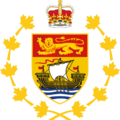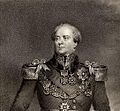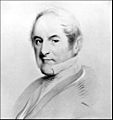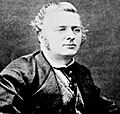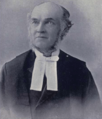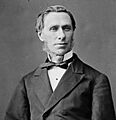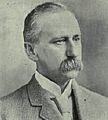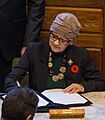List of lieutenant governors of New Brunswick facts for kids
The Lieutenant Governor of New Brunswick is a very important person in the province. They represent the King or Queen of Canada in New Brunswick. Think of them as the King's or Queen's personal representative in the province. Their job is to make sure the government works smoothly and to perform many ceremonial duties.
The role of Lieutenant Governor in New Brunswick officially started when New Brunswick joined Canadian Confederation in 1867. However, the idea of a governor for the province goes back much further, to 1786. Sometimes, when a Lieutenant Governor was unable to serve, another person, often a Chief Justice, would temporarily take on the responsibilities. These temporary leaders are sometimes called "administrators." They weren't officially sworn in as Lieutenant Governors but helped keep things running until a new one was appointed.
Contents
What Does a Lieutenant Governor Do?
The Lieutenant Governor has several important jobs. They make sure that the government of New Brunswick always has a leader. They also give official approval to new laws passed by the provincial government. This is called "Royal Assent." They also open and close sessions of the provincial legislature.
Beyond these official duties, the Lieutenant Governor also represents New Brunswick at many events. They meet with people from all walks of life, give out awards, and support community groups. They are a symbol of the province's history and its connection to the Canadian Crown.
Early Governors of New Brunswick (1786–1867)
Before New Brunswick became part of Canada in 1867, it had governors who represented the British King or Queen. These early leaders helped shape the province. They oversaw its growth and development.
Here are some of the key individuals who served as governors or acting governors during this period:
- Thomas Carleton (1786–1817): He was the very first governor of New Brunswick. He served for a long time under George III.
- George Stracey Smyth (1817–1823): He served as governor during a time of change for the province.
- Sir Howard Douglas (1824–1831): He was a military officer who became governor.
- Sir Archibald Campbell (1831–1837): Another military leader who served as governor.
- Sir John Harvey (1837–1841): He served as governor when Queen Victoria began her long reign.
- Sir William Colebrooke (1841–1848): He was governor during a period of growth for New Brunswick.
- Sir Edmund Walker Head (1848–1854): He later became the Governor General of Canada.
- John Manners-Sutton (1854–1861): He was governor during the lead-up to Confederation.
- Arthur Hamilton-Gordon (1861–1866): He was the last governor before New Brunswick joined Canada.
Lieutenant Governors Since Confederation (1867–Today)
After New Brunswick joined Canada in 1867, the role changed slightly to "Lieutenant Governor." These individuals continued to represent the monarch and play a vital role in the province's government.
Here are some of the notable Lieutenant Governors since 1867:
- Charles Hastings Doyle (1867): He was the first Lieutenant Governor of New Brunswick after Confederation.
- Lemuel Allan Wilmot (1868–1873): He was a lawyer and judge before becoming Lieutenant Governor.
- Sir Samuel Leonard Tilley (1873–1878 and 1885–1893): He was a "Father of Confederation" and served two terms as Lieutenant Governor.
- Robert Duncan Wilmot (1880–1885): He was a politician before taking on the role.
- John James Fraser (1893–1896): He had also served as Premier of New Brunswick.
- Abner Reid McClelan (1896–1902): He served into the new century.
- Jabez Bunting Snowball (1902–1907): A businessman and politician.
- Lemuel John Tweedie (1907–1912): He was also a former Premier of New Brunswick.
- Josiah Wood (1912–1917): A lawyer and politician.
- William Pugsley (1917–1923): Another former Premier who became Lieutenant Governor.
- William Frederick Todd (1923–1928): He was a successful merchant.
- Hugh Havelock McLean (1928–1935): A military officer and lawyer.
- Murray MacLaren (1935–1940): A doctor and politician.
- William George Clark (1940–1945): He served during World War II.
- David Laurence MacLaren (1945–1958): He served for a long period after the war.
- Joseph Leonard O'Brien (1958–1965): He was a businessman and politician.
- John B. McNair (1965–1968): He was a former Premier of New Brunswick.
- Wallace Samuel Bird (1968–1971): He was a businessman.
- Hédard Robichaud (1971–1981): He was the first Acadian Lieutenant Governor.
- George Stanley (1981–1987): He designed the Canadian flag.
- Gilbert Finn (1987–1994): He was a well-known educator and community leader.
- Margaret McCain (1994–1997): She was the first female Lieutenant Governor of New Brunswick.
- Marilyn Trenholme Counsell (1997–2003): A doctor and politician.
- Herménégilde Chiasson (2003–2009): A famous poet and artist.
- Graydon Nicholas (2009–2014): He was the first Indigenous Lieutenant Governor of New Brunswick.
- Jocelyne Roy-Vienneau (2014–2019): She was the first Acadian woman to hold the position.
- Brenda Murphy (2019–Present): She is the current Lieutenant Governor of New Brunswick.
Images for kids
See also
- Office-holders of Canada
- Canadian incumbents by year


